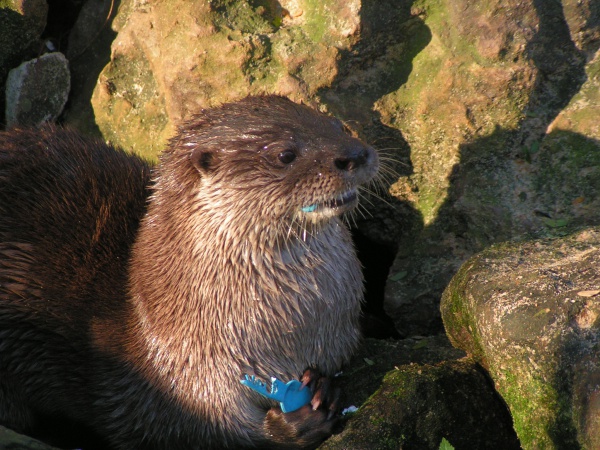Facts About Neotropical otter
The neotropical otter, also known as the neotropical river otter, is a captivating species found throughout Central America, South America, and Trinidad. These otters bear a close resemblance to other river otter species, typically measuring between 36 to 66 centimeters in length and weighing between 5 to 15 kilograms. They are solitary animals that primarily feed on fish and crustaceans and can inhabit a variety of riverine environments.
From a taxonomic perspective, the neotropical otter belongs to the genus Lontra and exhibits a broad distribution across South America. Geographic features like the Cordillera Mountains can isolate some populations. The neotropical otter is closely related to species such as Lontra felina and Lontra provocax. Several recognized subspecies exist, including Lontra longicaudis annectens, L. l. colombiana, L. l. enudris, L. l. incarum, L. l. longicaudis, and L. l. raferrous.
These otters are covered in dark grayish-brown fur, with males typically about 25% larger than females. They communicate using scent markings and vocalizations. Their diet primarily consists of fish and crustaceans, with some seasonal variations. Breeding usually occurs in the spring, with a gestation period of around 56 days, resulting in litters of 1 to 5 pups. Female otters are solely responsible for raising the young.
Neotropical otters are highly adaptable and can thrive in various environments, including rivers, swamps, and even marine shorelines. However, they face significant threats from habitat degradation, hunting, and pollution, leading to their Near Threatened status on the IUCN Red List. Conservation efforts are underway, including protective laws and attempts at captive breeding.
In captivity, neotropical otters have been observed mating and reproducing, although challenges such as infant mortality have been noted, possibly due to environmental factors. Despite these challenges, neotropical otters play a crucial role as ecological indicators in aquatic habitats. Their well-being is essential, and ongoing conservation actions are necessary to protect them from the multiple threats they face.

 Ecuador
Ecuador